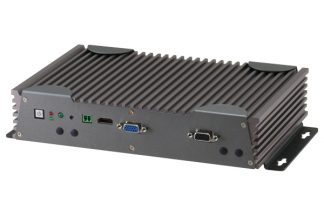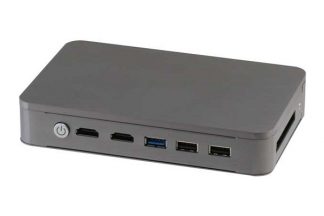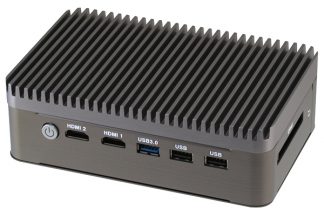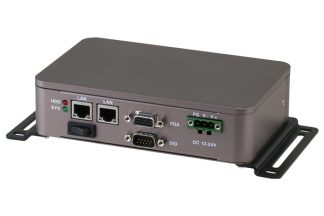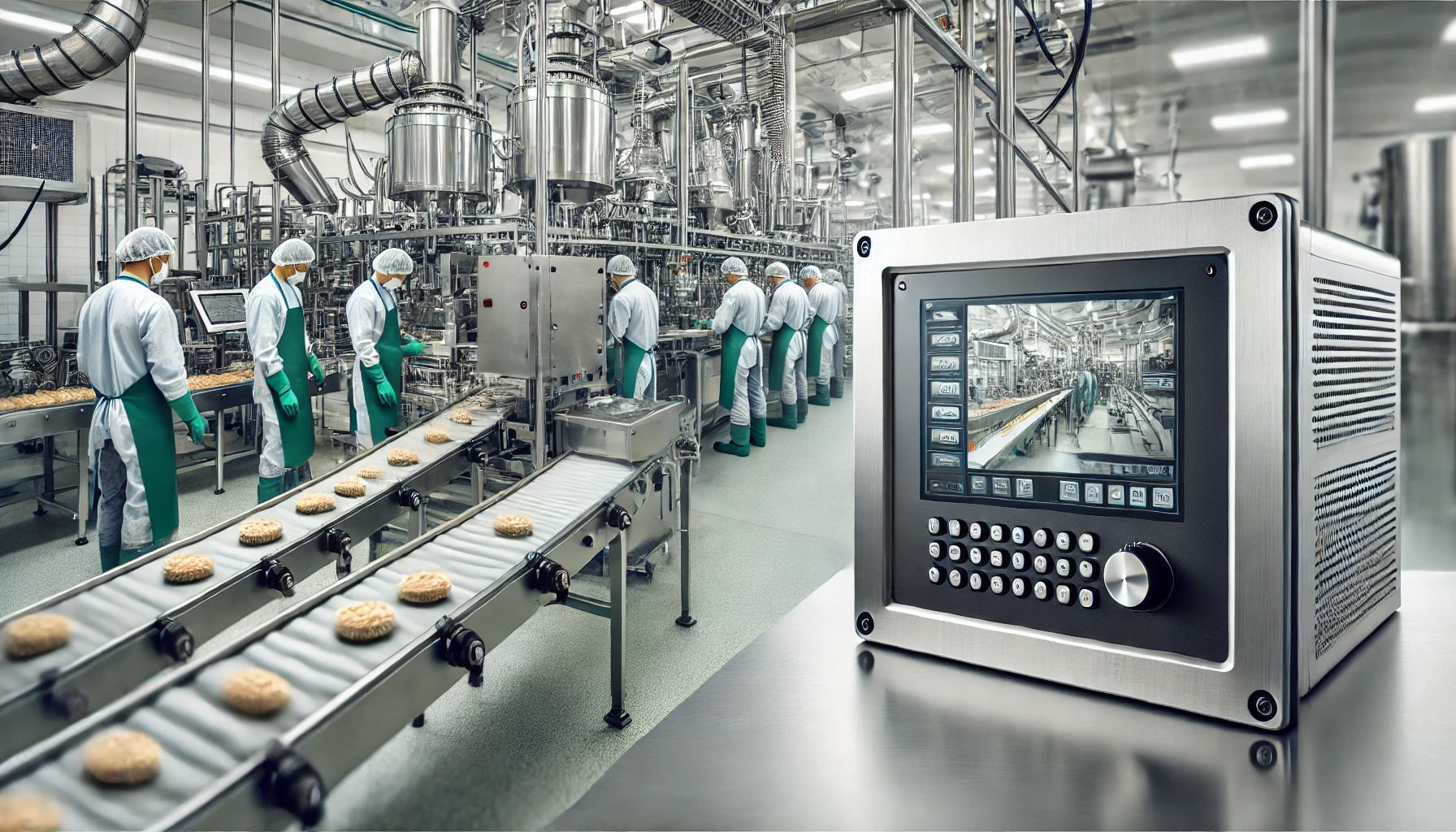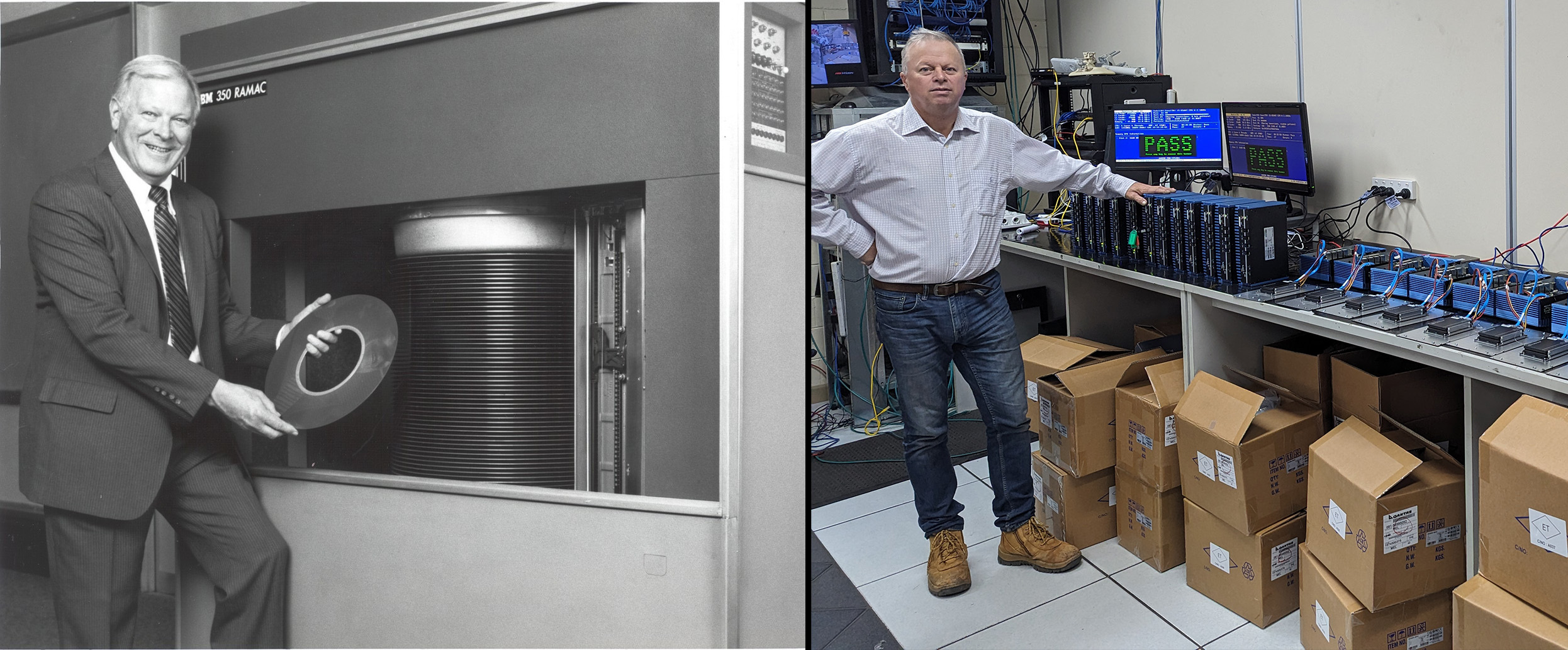
The groundbreaking advance in industrial computers!!!
Ok… let’s go back 69 years.
In September 1956, IBM introduced the RAMAC 350 disk storage unit, the world’s first hard disk drive. It weighed more than a ton, held 50 spinning platters, and stored what was then a truly remarkable 3.75MB of data. Nicknamed “the baloney slicer,” this machine wasn’t just about size or storage capacity, it represented a new way of thinking about information.
What once took up an entire room now fits in the palm of your hand. That contrast alone shows how far industrial computers have come since 1956. But it’s not just about size or performance, it’s about resilience and adaptability.
For the first time, businesses could move away from punch cards and access data directly, quickly, and efficiently. That was the beginning of industrial computers as we know it today. The journey from the RAMAC 350 to today’s fanless industrial computers is a story of constant refinement: faster, smaller, tougher, and more reliable. And while technology has transformed beyond recognition, the spirit of innovation remains the same.
The RAMAC 350 showed the world what was possible when bold ideas met engineering ambition. Today, industrial computers may look very different, but they carry the same DNA of innovation, reliability, and purpose.
Because just like in 1956, it’s not only about the technology itself, it’s about what that technology makes possible.
